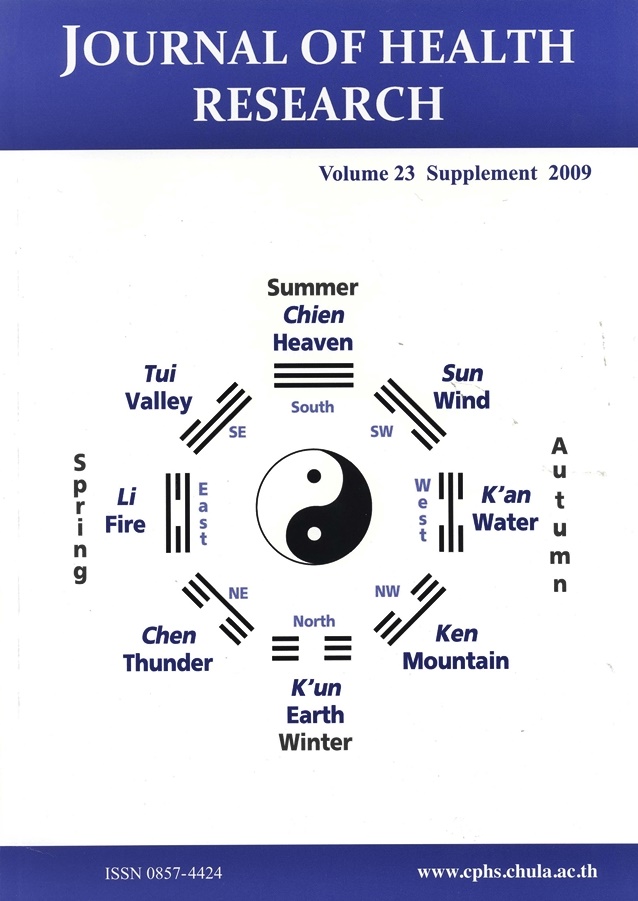Factors Related to Urinary Iodine Concentration of Pregnant Women in Thailand
Keywords:
urinary iodine, pregnant women, iodized saltAbstract
A cross-sectional study was conducted to assess factors related to urinary iodine concentration (UIC) of pregnant women in Thailand. Subjects came from government hospitals in 8 provinces. These were selected from 29 provinces included in the surveillance system for iodine deficiency in pregnancy of the Ministry of Public Health during 2005-2007. There were 2 provinces from each of the 4 regions of the country i.e. north, northeast, central, and south. There were 800 subjects, 100 from each province. Around 65 percent of them used iodized salt as iodine deficiency disorders (IDD) prevention measure. Median UIC was 9.19 μg/dl. Only 14% of pregnant women had appropriate UIC (in the range of 15.00 – 24.99 μg/dl). Iodine concentration in household salt was measured by test kit developed at Mahidol University. 68.1% of household salt samples had iodine concentration in the range of 30 – 100 ppm. Relationships between UIC and independent variables were analyzed. In bivariate analysis, both salt iodine and use of iodized salt for IDD prevention were statistically significantly positively associated with UIC (p<0.001). There were also significant differences by region and province (p<0.001). However, in multivariable linear regression analysis, only region and province achieved significance (p<0.001) . UIC was higher in the southern region than in other regions. Study findings suggest that IDD prevention measures in Thailand should be reconsidered. To be effective, these measures should be appropriate to Thai culture and also local cultures. Fish sauce and a wide variety of food can be produced to be iodine sources for Thai people, and these measures could potentially prove more effective than iodizing salt. The data in this study were subject to uncertainty, so further research is needed before policies are changed.







